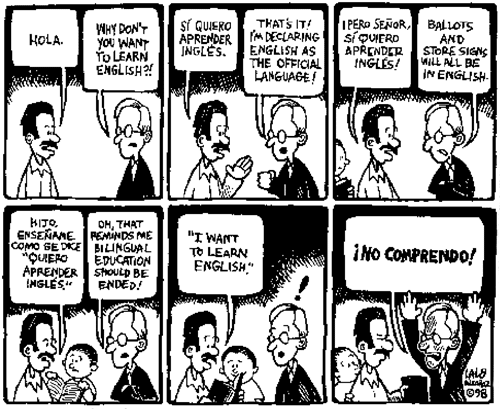The books
Classroom Instruction that Works (Marzano, Pickering, & Pollock, 2001) and
Building Academic Vocabulary (Marzano & Pickering, 2005) present a six step process on teaching academic vocabulary. In addition Marzano and Pickering (2005) suggest five preliminary phases to determine the academic terms that are to be taught. Since these phases were originally designed for use within a school system context, I have taken the liberty of modifying them to fit our population of L2 educators and material developers.
Phase 1: Decide the target number of words to be taught at each ability level.
Phase 2: Create a rank ordered list of words considered important for the ability level and specific goals of your L2 learners.
Phase 3: Determine how many terms should be taught within an allotted time frame.
Phase 4: Generate the final list of terms for each ability level.
Phase 5: Create materials to teach and reinforce the terms.
Once the words have been selected we move to the explicit teaching of the terms. The Building Academic Vocabulary (BAV) program offers six specific steps for the systematic instruction of the selected vocabulary. First, provide a brief description or explanation of the word (comprehensible input). Then, have students paraphrase the explanation of the term (speaking and writing practice). Third, have students create a non-linguistic representation of the word (divergent thinking). Fourth, engage students in activities to increase and extend their word knowledge (graded readers, word sorts). Step five, ask students to discuss the terms with one another often (communicative tasks, cooperative learning). Lastly, create games where students can regularly play with the words (Word Bingo, Jeopardy, Charades). (Adapted from Building Academic Vocabulary, Marzano & Pickering, 2005, p. 14-15)
Although the strategies proposed are not exclusively aimed at L2 learners, Marzano (2006) found highly significant differences between English Language Learners using the BAV program versus the control group.
“The positive effect of the BAV program appears most pronounced for ELL students, even though it exhibited highly significant positive effects with FRL (Free Reduced Lunch) students as well as the overall sample of students.” (Marzano, 2006, p.16)
Most of the discussion so far has focused on the use of reading and explicit vocabulary instruction to enhance student word knowledge. But what can an educator with a task-based approach to teaching and learning do for vocabulary development? Is it possible to increase a student’s word knowledge through a communicative approach to L2 learning? Newton (2001) addresses these questions in his duly titled article Options for Vocabulary Learning Through Communication Tasks. He points out that, L2 learners will most probably encounter new vocabulary as they practice communication. He argues that a task-based approach, through the use of cooperative learning, and pre-task, in-task, and post-task strategies as proposed by Skehan, will result in improved management of the delicate balance between comprehension and effective communication for L2 learners in an authentic environment.
Newton (2001) mentions seven basic strategies targeting each phase of the communication tasks. For the pre-task phase you may have students: (1) brainstorm a list of words based on the lesson’s topic; (2) create a cooperative dictionary search; or, (3) create a matching game where students hold half of the words and half of the definitions of a list and take turns reading and deciding on the matching word from their peer’s list. In-task activities include: (4) create a glossary of new terms; (5) create an interactive glossary where students are given the vocabulary in the form of flashcards and try to guess the definition and then check for meaning; (6) encourage students to negotiate meaning among themselves using each other as a resource.
In the post-task phase we find the seventh, and in my opinion, the most powerful alternative. This is to have students keep a personal dictionary of newly learned terms (Newton, 2001). A student’s personal dictionary or vocabulary log can be easily assembled and allows students to take responsibility for their learning. The student’s vocabulary notebook can be used as the student progresses from one level to the next. In the same way, the notebook becomes a record and a reflection of the student’s deeper and increasing word knowledge (Marzano & Pickering, 2005).
It seems that material developers for L2 learners have a difficult challenge ahead of them. Although much research has been done in the field of vocabulary development, appropriate materials to achieve this goal are not easily found. In the United States the availability of graded readers is mostly limited to elementary school interests. Furthermore, that which is available seems to focus mostly in Language Arts, not academic content. Also pre-created materials, though useful and time-efficient, should still be modified to address the specific needs of different L2 learners. Finally, it is clear that a systematic, comprehensive, and balanced approach to vocabulary development, with just the right amount of incidental and explicit instruction, would provide the scaffolding necessary to ensure an L2 learner’s success within an academic environment.
References:
Marzano, R. J. (2006). Supplemental report on the effects of the ASCD program for building academic vocabulary on students classified as eligible for free and reduce lunch (FRL) and students classified as English language learners (ELL). Alexandria, VA: Association for Supervision and Curriculum Development. Retrieved on March 25, 2007 from
http://www.ascd.org/ASCD/pdf/Building%20Academic%20Vocabulary/bav_report_2.pdfMarzano, R. J. & Pickering D. J. (2005). Building academic vocabulary: Teacher’s manual. Alexandria, VA: Association for Supervision and Curriculum Development.
Marzano, R. J., Pickering D. J., & Pollock, J. E. (2001). Classroom instruction that works. Alexandria, VA: Association for Supervision and Curriculum Development (ASCD).
Newton, J. (2001). Options for vocabulary learning through communication tasks. ELT Journal, 55(1), 30-37.
